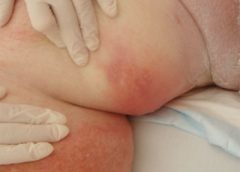Sad but true: Much of what we do as healthcare professionals is based on reimbursement. For nearly all the services and products we use in wound care and ostomy management, Medicare, Medicaid, and insurance companies control reimbursement. For many years, these payers have been deciding which interventions, medications, products, and equipment are the best, and then reimbursing only for those items. If we want to use something not on the list, we—or our patients—will have to pay for it out of pocket. (more…)
Read MoreSearch Results for: For
10 tips for a successful professional conference
Attending a professional conference can yield many benefits if you follow these 10 tips.
1 Obtain new knowledge. Conferences provide opportunities for clinicians to gain new knowledge about procedures, technology, and research. Take notes and keep handouts for reference. After you return, share what you have learned with colleagues so multiple people benefit from the conference. Remember to complete the necessary information to obtain professional continuing education (CE) credit.
2 Become certified. Conferences typically provide opportunities for attendees to take certification exams or attend sessions to prepare for exams. If you’re planning to take a certification test, obtain test blue prints at the conference or attend a pre- or post-conference session that focuses on the certification exam. If you’re ready to test, sign up before the conference so you can become certified while you’re away. (more…)
Read MoreCaring for Wounds
Pros and cons of hydrocolloid dressings for diabetic foot ulcers
Diabetic foot ulcers stem from multiple factors, including peripheral neuropathy, high plantar pressures, decreased vascularity, and impaired wound healing. Contributing significantly to morbidity, they may cause limb loss and death. (See Foot ulcers and diabetes.)
Initially, hydrocolloid dressings were developed to function as part of the stomal flange. Based on their success in protecting peristomal skin, they were introduced gradually into other areas of wound care. They contain wafers of gel-forming polymers, such as gelatin, pectin, and cellulose agents, within a flexible water-resistant outer layer. The wafers absorb wound exudate, forming a gel and creating a moist healing environment. (more…)
Read MoreFDA approves product for treating diabetic foot ulcers
Obesity spells problems for trauma patients
Providing skin care for bariatric patients
By Gail R. Hebert, MS, RN CWCN, DWC, WCC, OMS
How would you react if you heard a 600-lb patient was being admitted to your unit? Some healthcare professionals would feel anxious—perhaps because they’ve heard bariatric patients are challenging to care for, or they feel unprepared to provide their care. (more…)
Read MoreStaying out of sticky situations: How to choose the right tape for your patient
By Ann-Marie Taroc, MSN, RN, CPN
Are you using the wrong kind of medical tape on your patients? Although we strive to provide the safest care possible, some nurses may not realize that medical tape used to secure tubes and dressings can cause harm. The harm may stem from using the wrong product or using a product incorrectly, which can cause adhesive failure or skin injury. (more…)
Read MoreThe mending tissue: Cellular instructions for tissue repair
Providing evidence-based care for patients with lower-extremity cellulitis
By Darlene Hanson, PhD, RN; Diane Langemo, PhD, RN, FAAN; Patricia Thompson, MS, RN; Julie Anderson, PhD, RN; and Keith Swanson, MD
Cellulitis is an acute, painful, and potentially serious spreading bacterial skin infection that affects mainly the subcutaneous and dermal layers. Usually of an acute onset, it’s marked by redness, warmth, swelling, and tenderness. Borders of the affected skin are characteristically irregular. Although cellulitis may occur in many body areas, this article discusses the most common location—the lower limb. (more…)
Read MoreCreating high-performance interprofessional teams
By Terry Eggenberger, PhD, RN, CNE, CNL; Rose O. Sherman, EdD, RN, NEA-BC, FAAN; and Kathryn Keller, PhD, RN
Kate Summer, a wound care clinician in a urban hospital, is leading an initiative to reduce pressure ulcers. She knows from experience that more effective communication and collaborative planning by the interdisciplinary team managing these patients is crucial for reducing pressure ulcers. But doing this has been challenging for Kate. (more…)
Read MoreHealthcare reform and changes provide opportunities for wound care clinicians
By Kathleen D. Schaum, MS
Qualified healthcare professionals (QHPs), such as physicians, podiatrists, physician assistants, nurse practitioners, and clinical nurse specialists, are taught to diagnose the reasons that chronic wounds aren’t healing and to create plans of care for aggressively managing the wound until it heals. Wound care professionals—nurses and therapists—are taught to implement those plans of care. All of these highly skilled wound care professionals know how to manage chronic wounds from identification through healing. (more…)
Read More



